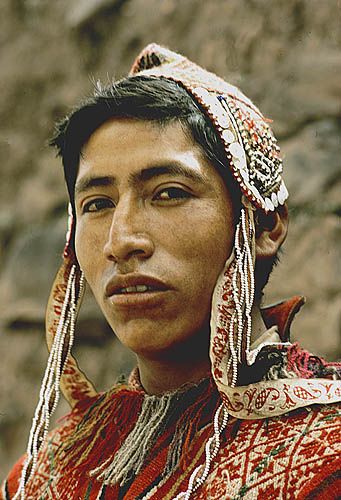
Threads of Heritage: Beaded Jewelry Traditions of South America
Share
Introduction
South America is a continent of rich cultural diversity and breathtaking landscapes, from the towering Andes mountains to the lush Amazon rainforest. This incredible environment has nurtured generations of indigenous peoples whose artistry with beads tells stories of identity, spirituality, and connection to nature. In this installment of our Global Beading Around the World series, we explore the beadwork traditions of South America’s most influential tribes and regions, discovering how their unique styles inspire today’s artisans—including Dequa Designs.
The Quechua & Shipibo-Conibo of Peru

Peru’s Quechua people are renowned for their intricate beadwork inspired by the vibrant patterns found in Andean textiles. Their necklaces and bracelets often incorporate geometric motifs that reflect ancient cosmology and agricultural cycles. Meanwhile, the Shipibo-Conibo tribe of the Amazon uses beadwork as a form of spiritual expression. Their designs, often symmetrical and complex, are believed to hold medicinal and mystical properties.
Dequa’s Reflection:
“The Quechua’s use of geometry reminds me of the precision I strive for in bead crochet. The Shipibo-Conibo’s spiritual patterns inspire me to think about jewelry as a vessel of energy and healing.”
Bolivia’s Aymara & Guarani Tribes

The Aymara people of Bolivia create symmetrical beadwork that adorns traditional clothing and ceremonial accessories. The bright, bold colors reflect their vibrant culture and connection to the highland environment. The Guarani, who inhabit the rainforest areas, integrate natural materials such as seeds and feathers into their beadwork, telling stories of their intimate relationship with the jungle.
Colombia’s Wayuu & Emberá

The Wayuu of Colombia are famous for their colorful woven mochilas, but their bead jewelry is equally remarkable. Using bright, contrasting colors, their beadwork blends utility with artistry. The Emberá tribe’s delicate bead patterns celebrate the flora and fauna of their surroundings and often incorporate spiritual symbolism.
Brazil’s Tupi & Kayapó

Brazil’s indigenous Tupi tribe uses seeds and natural pigments to create necklaces and adornments that connect wearers to their environment. The Kayapó are known for their vibrant ceremonial headdresses and bracelets, featuring symbolic designs that signify status and identity.
Ecuador’s Tsáchila & Achuar

The Tsáchila people are known for their use of vivid seed beads in hair and body decoration, while the Achuar tribe’s beadwork plays a vital role in ritual dress and spiritual protection. Their work demonstrates how beadwork continues to serve not just as adornment, but as a deeply meaningful cultural practice.
Traditional Materials and Symbolism
South American beadwork uses materials abundant in nature—seeds, stones, feathers, and natural pigments—reflecting each tribe’s environment and beliefs. Colors have deep symbolism: red often signifies life and vitality; green connects to nature and healing; black may represent protection and ancestral spirits.
Dequa’s Reflection:
“Working with natural beads reminds me that every piece carries a story beyond beauty—an energy linked to the earth, spirit, and history.”
Contemporary Artists and Cooperatives
Across South America, cooperatives empower indigenous women to preserve beadwork traditions while reaching global markets. Organizations like Artesanías de Colombia and Peruvian Women’s Artisans Collective provide platforms for fair trade and cultural celebration.
Modern designers blend traditional motifs with contemporary fashion, creating
Carnival Beadwork Spectacle



South America’s beadwork culture isn’t just found in tribal traditions—it bursts into vibrant life each year during Brazil’s famous Rio Carnival. The elaborate costumes and accessories worn during Carnival are often adorned with thousands of tiny beads, sequins, and gemstones, creating dazzling displays of color and craftsmanship. These festive beadworks are designed to catch the sunlight and dazzle audiences as samba dancers glide through the streets.
Carnival beadwork represents a fusion of indigenous artistry, African heritage, and Portuguese influences, making it a cultural melting pot of beaded expression. For artisans, the Carnival season is both a creative outlet and a livelihood, as many specialize in hand-beading the spectacular costumes that bring the festival to life.
Dequa’s Reflection:
“Carnival beadwork is like the ultimate bead party—intense, joyful, and full of rhythm. It reminds me how beadwork isn’t just craft, it’s celebration and community on a grand scale.”
